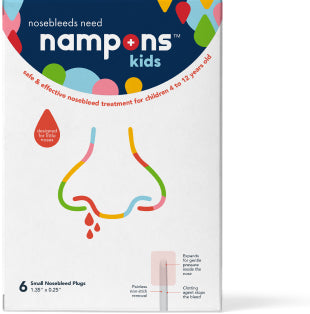Nosebleeds are one of the most common symptoms of Hereditary Hemorrhagic Telangiectasia (HHT). According to Cure HHT, they occur in over 90% of patients, and while they range in severity, they can be a nuisance for the patient and lead to embarrassment and fear, not to mention a lot of bloodstained clothing.
What Are HHT Nosebleeds?
Most HHT patients experience their first nosebleeds in childhood, but they can also occur much later in life. These nosebleeds are often persistent and frequent and they occur as a result of abnormal blood vessel formations known as telangiectasia.
Telangiectasia presents as small red or purple spots and they can appear anywhere on the skin, including on the lining of the nose. If these rupture, the nose bleeds.
How to Prevent Nosebleeds With HHT
There are a few things you can do to decrease the risk of nosebleeds:
- Keep a Food Diary: Create a food diary to find the foods and drinks that trigger your nosebleeds more than others. For instance, chocolate, red wine, citrus fruits, and spices are all known to trigger nosebleeds in HHT patients.
- Keep the Nasal Lining Moist: If the lining of your nose is very dry, it can crack and rupture. Keep it moist using a saline spray.
- Careful When Blowing: Don't apply too much pressure to your nose when blowing and don't blow your nose just after a nosebleed.
- Avoid Low Humidity: Dryness is a leading trigger for nosebleeds. If your home is very dry, use a humidifier.
- Stop Picking: Most nosebleeds occur as a result of nose-picking. Avoid picking your nose if you want to reduce the risk of ruptures.
How to Treat Nosebleeds With HHT
If you are experiencing regular nosebleeds, check out the Epistaxis Severity Score (ESS) here and see where you fit on the scale. Not only will this information help you to determine how serious and problematic your nosebleeds are, but it could make a diagnosis easier for your healthcare provider.
If your physician determines that intervention is needed to stop further nosebleeds, they may recommend one of the following:
- Coagulation therapy to increase the formation of blood clots
- Topical therapies to moisten and protect the nasal lining
- Medications to thicken the blood and reduce nosebleed risk
- Laser or radiotherapy
- Embolization to block an artery
In severe cases, a nasal closure surgery can be performed. As the name suggests, this surgical intervention closes the nose and prevents further bleeding. However, it also affects the patient's breathing, as well as their sense of smell and taste.
I Have Nosebleeds, Do I Have HHT?
Hereditary Hemorrhagic Telangiectasia is rare. It affects just 1 in 5,000 to 1 in 10,000 people, which means there could be anywhere from 33,000 to 66,000 cases in the United States. (1)
Nosebleeds, on the other hand, are very common, and over 60% of people will get them at some point in their life. (2)
If you have frequent nosebleeds, it could indicate HHT, but if you don't have a family history of the disease and there are no other symptoms, it's more likely to be caused by another condition.
Frequent nosebleeds are alarming, but more often than not, the cause is something innocuous, including:
- Nose-picking
- Low humidity
- Dry nose/skin
- Long fingernails (making ruptures more common when nose-picking)
- Trauma (such as a blow to the face suffered during contact sports)
- High blood pressure
- Certain medications
If you are suffering from frequent nosebleeds, speak with your healthcare provider. They will examine you and ask questions about nosebleed triggers and family history to make a diagnosis. If HHT is suspected, they may send you for genetic testing.
Summary: Dealing with HHT Nosebleeds
There is no cure for HHT. It is a genetic condition and there is a 50% chance that a parent will pass it onto a child. It's dominant and not passive, so it does not "skip a generation", and it can also occur as a unique mutation.
There are some serious risks and complications to consider if you have been diagnosed with HHT, and these stem from something known as arteriovenous malformations (AVMs), which are vascular malformations that appear in the brain, lungs, liver, spine, or gastrointestinal tract.
However, these can be treated (using embolization, surgery, and medications), and if the patient monitors their condition, seeks help when it's needed, and keeps their nosebleeds under control, there's no reason why they can't live a long, healthy, and happy life with a life expectancy similar to the national average.



